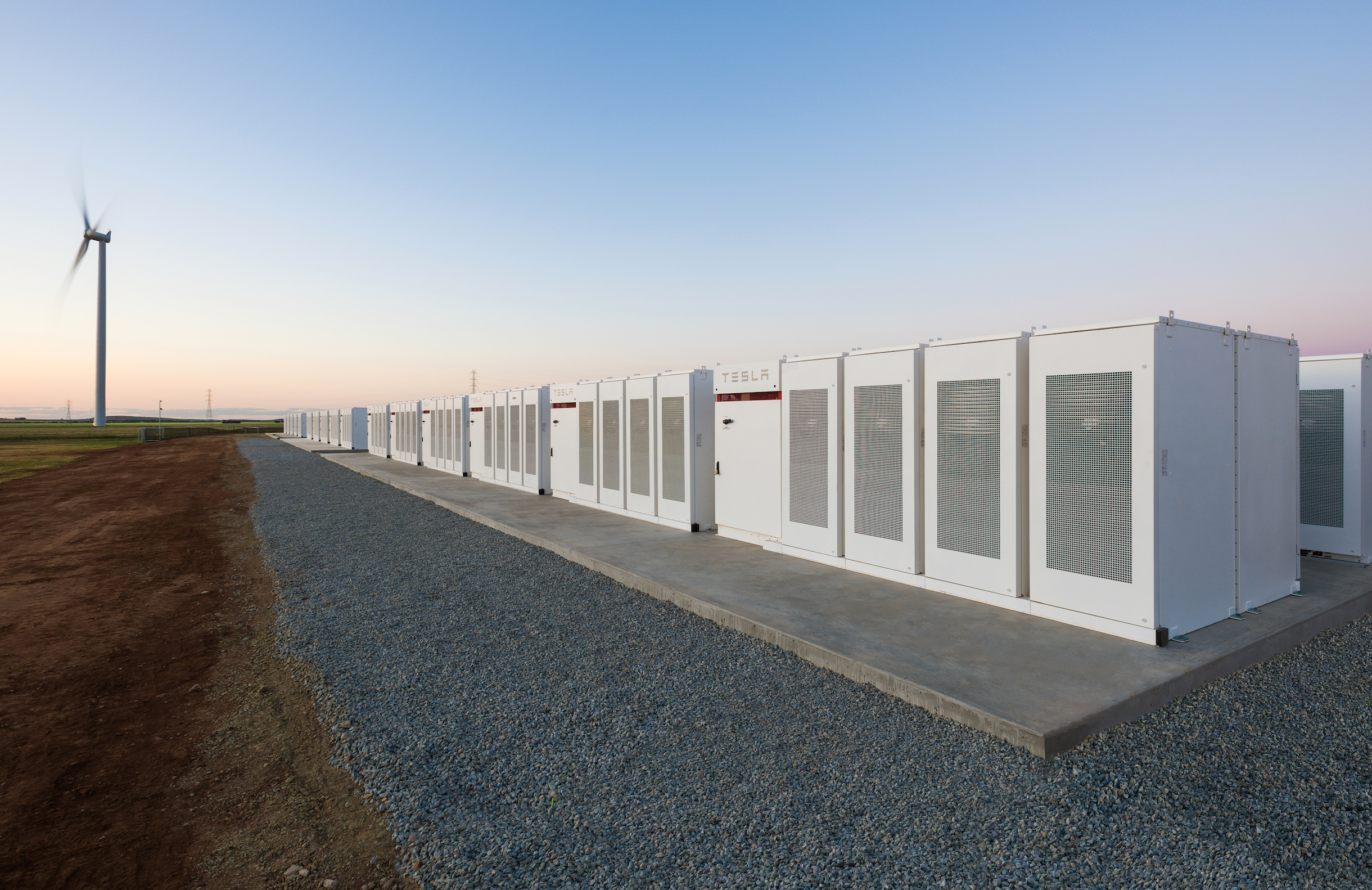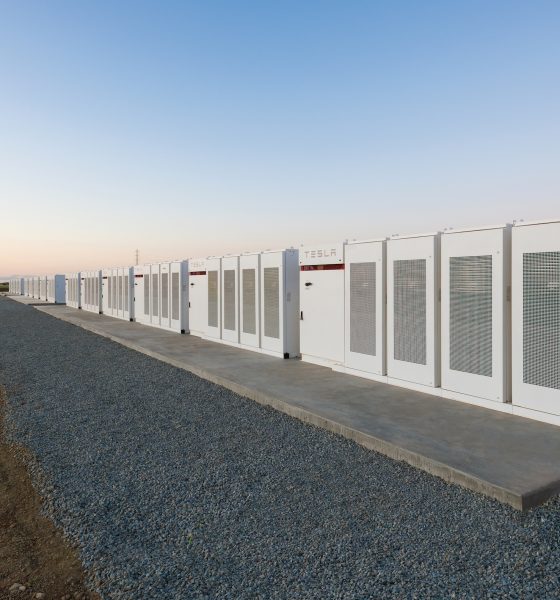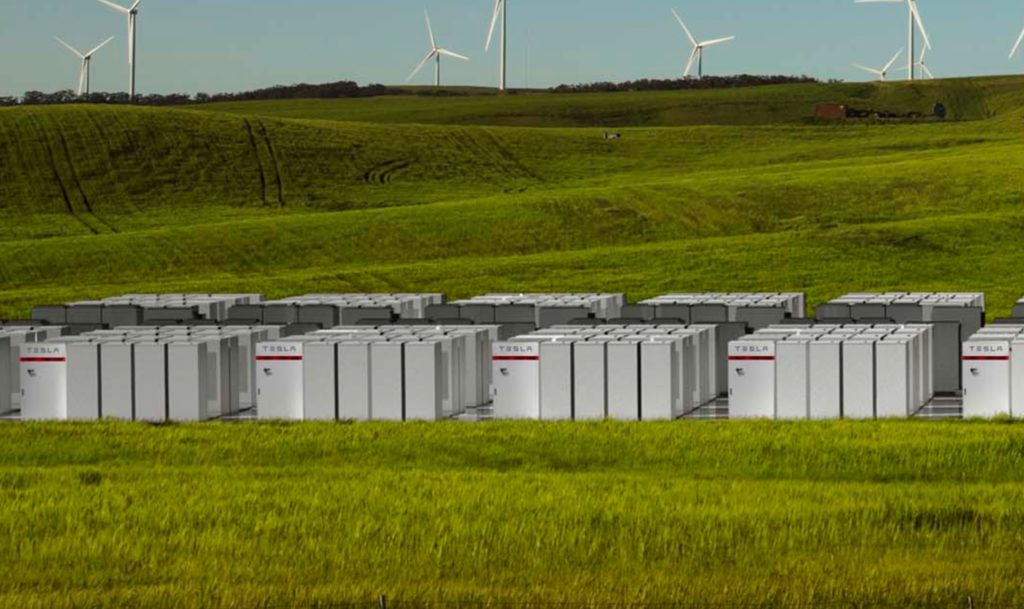

Energy
Tesla’s success in Australia opens up opportunity for 2nd big battery project in country
Following Tesla’s successful deployment of the world’s largest battery in South Australia, carrying out CEO Elon Musk’s 100-day target to install a grid-scale Powerpack battery unit, or the system would be free, another state in the land down under has lined up as Tesla Energy’s next customer. As noted in a recent report from the Sydney Morning Herald, Victoria has joined South Australia in its push towards a large-scale renewable energy system.
Tesla’s South Australia Powerpack facility currently stands as the largest lithium-ion battery of its kind on the planet. Powered by clean energy from Neoen’s Hornsdale Wind Farm near Jamestown, the mammoth 100 MW/129 MWh battery is capable of powering up to 30,000 homes during blackout periods.
According to the Australian Energy Market Operator (AEMO), the Powerpack system in SA has already proven itself multiple times since it was completed, providing ample backup power and other grid services hundreds of times in December 2017 alone. More notably, Tesla’s energy system recently supplied emergency power to one of Australia’s biggest coal-fired power stations after it experienced an unexpected loss of power on December 14.
The notable success of Tesla’s South Australia facility seems to be a significant driving force for the state of Victoria, which ultimately decided to pursue a contract with the California-based electric carmaker and energy firm to install its very own Powerpack system. Victoria’s batteries would be installed in Bulgana, though at 20 MW, the system would only be 1/5th the size of South Australia’s facility.
Franck Woitiez, managing director of Neoen, a French energy firm and Tesla’s partner in the SA Powerpack system, is optimistic about the potential of Victoria’s batteries. According to the Neoen executive, the Bulgana Powerpack system might even be enough to provide adequate support for the area’s power grids in the near future.
“The performance of the South Australian battery is outstanding. The Bulgana battery is primarily going to provide energy to Nectar Farms and may support the grid in the future,” he said, according to a SMH report.

Tesla’s 100 MW/129 MWh Powerpack system dubbed as the ‘World’s largest battery’ in Jamestown, Australia
Energy officials in Victoria are also equally excited about Tesla’s upcoming Powerpack system. According to energy minister Lily D’Ambrosio, the Elon Musk-led energy company’s forthcoming project would play a vital role in Victoria’s pursuit of renewable energy.
“(The agreement is) a major step forward for communities, businesses and the renewable energy industry. This project will reduce greenhouse gas emissions while helping meet Victoria’s renewable energy generation targets,” the energy minister said.
John Grimes, head of the Smart Energy Council, further stated that the clean energy initiatives of South Australia, and now Victoria, are but the beginning. Grimes also said that 2018 might very well be a pivotal year for renewable energy.
“What we’re seeing with the South Australian battery, what we’re seeing in Victoria, is really the tip of the iceberg for a pipeline of projects that’s coming along. This is a breakout year for energy storage.”
Tesla’s South Australian Powerpack system initially captured the public’s eye after Elon Musk and fellow billionaire Mike Cannon-Brookes, who co-founded Atlassian, conducted a friendly wager on Twitter. During the two billionaires’ Twitter exchange, Musk raised the stakes of the bet by declaring that Tesla would build a working Powerpack system for SA in 100 days or it would be free. Not long after, South Australia became home to Tesla’s largest lithium-ion battery system in the world.

Cybertruck
Tesla updates Cybertruck owners about key Powershare feature

Tesla is updating Cybertruck owners on its timeline of a massive feature that has yet to ship: Powershare with Powerwall.
Powershare is a bidirectional charging feature exclusive to Cybertruck, which allows the vehicle’s battery to act as a portable power source for homes, appliances, tools, other EVs, and more. It was announced in late 2023 as part of Tesla’s push into vehicle-to-everything energy sharing, and acting as a giant portable charger is the main advantage, as it can provide backup power during outages.
Cybertruck’s Powershare system supports both vehicle-to-load (V2L) and vehicle-to-home (V2H), making it flexible and well-rounded for a variety of applications.
However, even though the feature was promised with Cybertruck, it has yet to be shipped to vehicles. Tesla communicated with owners through email recently regarding Powershare with Powerwall, which essentially has the pickup act as an extended battery.
Powerwall discharge would be prioritized before tapping into the truck’s larger pack.
However, Tesla is still working on getting the feature out to owners, an email said:
“We’re writing to let you know that the Powershare with Powerwall feature is still in development and is now scheduled for release in mid-2026.
This new release date gives us additional time to design and test this feature, ensuring its ability to communicate and optimize energy sharing between your vehicle and many configurations and generations of Powerwall. We are also using this time to develop additional Powershare features that will help us continue to accelerate the world’s transition to sustainable energy.”
Owners have expressed some real disappointment in Tesla’s continuous delays in releasing the feature, as it was expected to be released by late 2024, but now has been pushed back several times to mid-2026, according to the email.
Foundation Series Cybertruck buyers paid extra, expecting the feature to be rolled out with their vehicle upon pickup.
Cybertruck’s Lead Engineer, Wes Morrill, even commented on the holdup:
As a Cybertruck owner who also has Powerwall, I empathize with the disappointed comments.
To their credit, the team has delivered powershare functionality to Cybertruck customers who otherwise have no backup with development of the powershare gateway. As well as those with solar…
— Wes (@wmorrill3) December 12, 2025
He said that “it turned out to be much harder than anticipated to make powershare work seamlessly with existing Powerwalls through existing wall connectors. Two grid-forming devices need to negotiate who will form and who will follow, depending on the state of charge of each, and they need to do this without a network and through multiple generations of hardware, and test and validate this process through rigorous certifications to ensure grid safety.”
It’s nice to see the transparency, but it is justified for some Cybertruck owners to feel like they’ve been bait-and-switched.
Energy
Tesla starts hiring efforts for Texas Megafactory
Tesla’s Brookshire site is expected to produce 10,000 Megapacks annually, equal to 40 gigawatt hours of energy storage.

Tesla has officially begun hiring for its new $200 million Megafactory in Brookshire, Texas, a manufacturing hub expected to employ 1,500 people by 2028. The facility, which will build Tesla’s grid-scale Megapack batteries, is part of the company’s growing energy storage footprint.
Tesla’s hiring efforts for the Texas Megafactory are hinted at by the job openings currently active on the company’s Careers website.
Tesla’s Texas Megafactory
Tesla’s Brookshire site is expected to produce 10,000 Megapacks annually, equal to 40 gigawatt hours of energy storage, similar to the Lathrop Megafactory in California. Tesla’s Careers website currently lists over 30 job openings for the site, from engineers, welders, and project managers. Each of the openings is listed for Brookshire, Texas.
The company has leased two buildings in Empire West Business Park, with over $194 million in combined property and equipment investment. Tesla’s agreement with Waller County includes a 60% property tax abatement, contingent on meeting employment benchmarks: 375 jobs by 2026, 750 by 2027, and 1,500 by 2028, as noted in a report from the Houston Business Journal. Tesla is required to employ at least 1,500 workers in the facility through the rest of the 10-year abatement period.
Tesla’s clean energy boom
City officials have stated that Tesla’s arrival marks a turning point for the Texas city, as it highlights a shift from logistics to advanced clean energy manufacturing. Ramiro Bautista from Brookshire’s economic development office, highlighted this in a comment to the Journal.
“(Tesla) has great-paying jobs. Not just that, but the advanced manufacturing (and) clean energy is coming to the area,” he said. “So it’s not just your normal logistics manufacturing. This is advanced manufacturing coming to this area, and this brings a different type of job and investment into the local economy.”
Energy
Tesla and Samsung SDI in talks over new US battery storage deal: report
The update was related by industry sources and initially reported by South Korean news outlets.

Recent reports have suggested that Tesla and Samsung SDI are in talks over a potential partnership to supply batteries for large-scale energy storage systems (ESS).
The update was related by industry sources and initially reported by South Korean news outlets.
ESS batteries to be built at Samsung’s Indiana plant
As noted in a report from Korea JoongAng Daily, the demand for energy storage systems has been growing rapidly in North America, thanks in no small part to the surge in AI investments across numerous companies. With this in mind, Tesla has reportedly approached Samsung SDI about a potential battery supply deal.
The deal is reportedly worth over 3 trillion Korean won (approximately $2.11 billion) and will span three years, according to The Korea Global Economic Daily. A battery supply deal with Samsung SDI could make sense for Tesla as the company already has a grid-scale battery, the Megapack, which is perfect for industrial use. Samsung SDI could simply supply cells for the EV maker.
Production of the batteries would reportedly take place at Samsung SDI’s joint venture factory with Stellantis in Indiana, which is currently under construction. Samsung SDI recently announced plans to use part of that plant’s EV lines to produce cells for ESS, with a targeted capacity of 30 GWh by the end of next year.
Tesla and Samsung’s partnership
At present, only a handful of manufacturers, including Korea’s LG Energy Solution, Samsung SDI, SK On, and Japan’s Panasonic, are capable of producing energy storage-scale batteries domestically in the United States. A Samsung SDI official issued a comment about the matter, stating, “Nothing has been finalized regarding cooperation with Tesla.”
The possible energy storage system deal adds another layer to Tesla’s growing collaboration with Samsung, which is already in line as a partner in the upcoming production of Tesla’s AI5 and AI6 chips. Early sample manufacturing of the AI6 is expected to begin in South Korea, with mass production slated for Samsung’s Texas-based Taylor foundry when it starts operations.
The AI6 chip will power Tesla’s next wave of high-volume projects, including the Optimus humanoid robot and the autonomous Cybercab service. Musk has called the partnership with Samsung a “real collaboration,” adding that he personally plans to “walk the line” at the Taylor facility to speed up progress.








